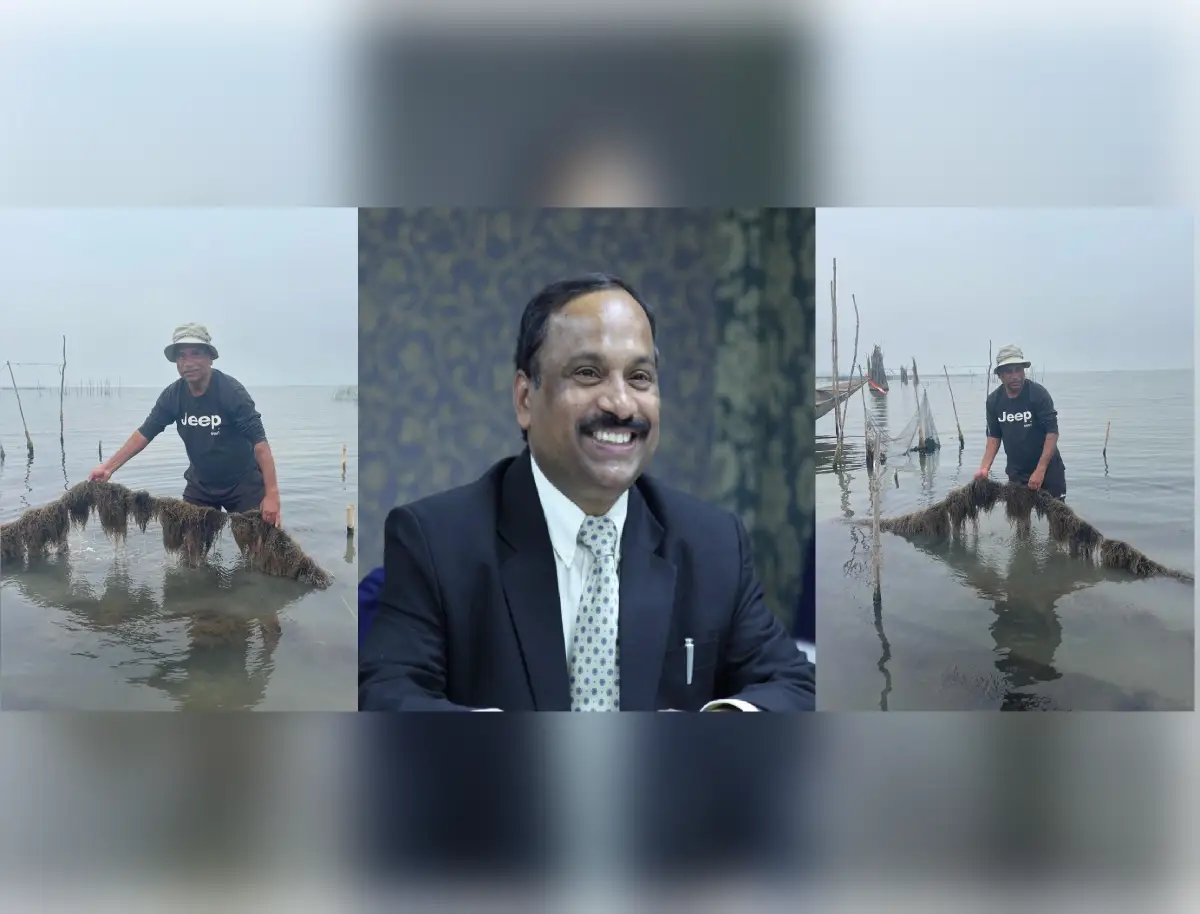
From Cherry Blossoms To Seaweeds
NEW DELHI (IANS) – Delhi University Professor Dinabandhu Sahoo, who is known as the Cherry Blossom founder of India, has designed a wheel — “Indian Seaweeds Wheel” — like the Ashok Chakra, which represents India and Indian pride, to promote the cultivation of seaweeds in a big way to fight climate change through innovative methods.
Sahoo said that Red Seaweeds Gracilaria, which has multiple economic uses, is tied to the spokes, and the wheels are submerged underwater for 45 days.
Sahoo has been studying seaweed for the past 35 years to create underwater forests through seaweed cultivation and artificial reef construction to fight climate change through innovative methods.
“Why seaweed? Why not plant more trees on land? Because seaweed absorbs more carbon dioxide than traditional land plants. While a temperate zone absorbs 12 tons of CO2/hectare/year, tropical forests absorb 15-20 tons of CO2/hectare/year, Seaweeds absorb 20-48 tons of CO2/hectare/year,” said Sahoo, who was the first Indian student to visit Antarctica way back in 1987-88 and made two trips to the Arctic.
He said that seaweed also enhances marine biodiversity especially prawns and fishes, and reduces acidification of the oceans and coastal pollution.
“Further, seaweeds are used as a source of food, feed, fodder, bio-fertilizer, biofuel, and the extracts from seaweeds are used in toothpaste, ice cream, tomato ketchup, chocolates, textile printing, bioplastics, and paper manufacturing among other things.”
“Globally, seaweed is a $20 billion industry and the demand for seaweed and its products is increasing by 10 percent per year, said the ocean explorer who has traveled extensively in all the continents and the five oceans in search of seaweed.
Noting that the whole world is looking for seaweed-based solutions to India for CO2 sequestration and energy production, the scientist said that India has a long coastline, good species diversity, and good human resources.
Sahoo is planning to put Indian seaweed wheels in different coastal states with the help of the local villagers and youths.
He wants the help of the government, private industry, startups, and CSR funds to promote this.
He is also designing artificial reefs and trying to place them at the bottom of the sea to not only enhance fisheries productivity but also to minimize the cyclonic impact in the coastal areas.
“The seaweed from natural resources is limited and one day these would be exhausted. But in the sea, it is available in abundance. Seaweed cultivation would facilitate increased fish and prawn production,” Sahoo asserted.
While people were finalizing the Global Climate Action plan during COP28 in Dubai in November-December last year, Sahoo was busy in spending all his time inside the coastal waters of the Bay of Bengal and in the villages at Chilika Lake in Odisha to do something different and unique to combat the climate crisis.
Sahoo who is a former Director of the Manipur based Institute of Bio-resources and Sustainable Development (IBSD), started a Cherry Blossom movement in India a few decades ago which led to successful ‘Cherry Blossom Festivals’.
His sustained efforts led to the planting of nearly 60,000 Cherry Blossom trees in different states and brought in a Pink Revolution.
Now Sahoo is working towards a Blue Revolution which will boost the blue economy.
In November 2016 Sahoo, who played a big role in popularizing Cherry Blossom in Meghalaya and Manipur, took the lead in organizing India’s first “Cherry Blossom Festival” in Shillong which attracted thousands of people and subsequently became an international event for the past nine years.
Cherry Blossom or “Sakura” is the national flower of Japan, which is also a source of inspiration for the Japanese people. India became the 28th country in the world to be included in the Sakura Map.
The Meghalaya tourism department in collaboration with other organizations organizes the ‘Shillong Cherry Blossom Festival’ in November every year. Many domestic and foreign tourists participate in it.




